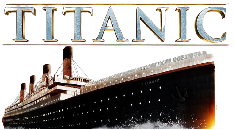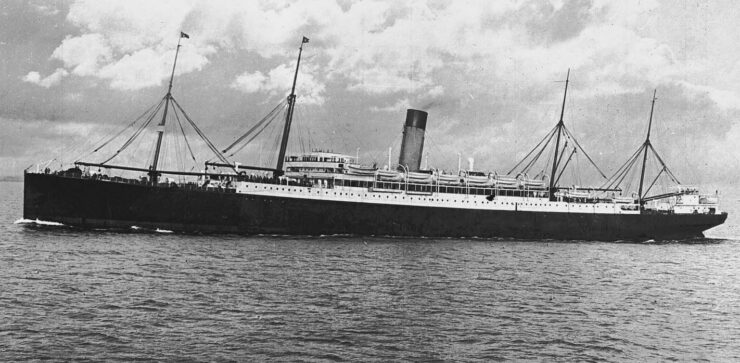- Builder: Harland and Wolff
- Yard No.: 432
- Launched: 11th December, 1912
- Maiden Voyage: 24th July, 1913 Liverpool – Australia
- Gross Tonnage: 18,495 tons
- Length: 655.1 ft.
- Beam: 69.4 ft.
- Decks: 4
- Funnels: 1
- Masts:
- Propellers: 3
- Engines: 2 x 3 cylinder triple expansion engines + low pressure turbine to centre prop.
- Boilers:
- Speed: 15.5 knots
- Port of Registry: Liverpool
- Carrying Capacity:
- Sister Ships: N/A
Ceramic was built at the Belfast yard of Harland and Wolff for the White Star Line, in 1912, and was launched on the 11th December, 1912. Ceramic was fitted two permanent 4.7″ guns which fitted at the rear, under covers.
Ceramic was delivered on the 5th July, 1913, which was just in time for her to appear in the Mersey Pageant on the 11th. The pageant was arranged by the Liverpool Steamship Owners Association, and it was organised to celebrate the visit of King George V, who was invited to open the new Gladstone graving dock.
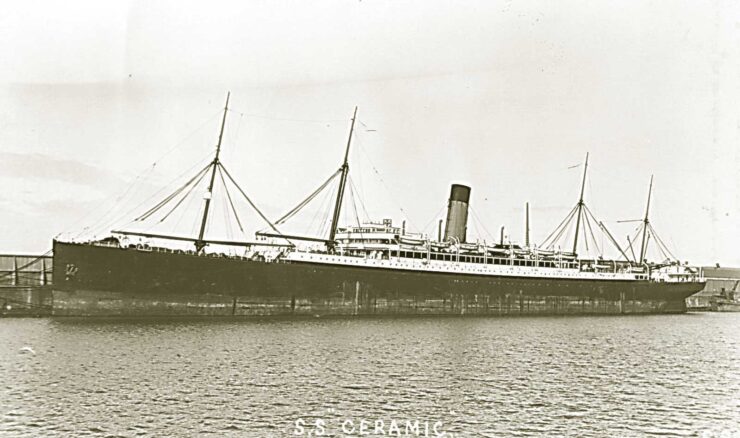
The all new Ceramic was one of the many ships present, along with 600 guests, and was third in line, behind Mauretania and Andania, in order of tonnage. Her fellow White Star Line stablemate Mersey, was also a guest at the Mersey Pageant.
Ceramic’s maiden voyage began on the 24th July, 1913, between Liverpool and Australia on the Joint Service. Ceramic was the largest vessel on the route, until the Mooltan, a vessel of 20,841 tons, served on the route in 1923. Ceramic still holds the record for the tallest masts to pass under Sydney Harbour bridge.
In the August of 1914, Ceramic was put onto trooping duties to the United Kingdom for the Australian Expeditionary Force, and given the pendant number A 40.
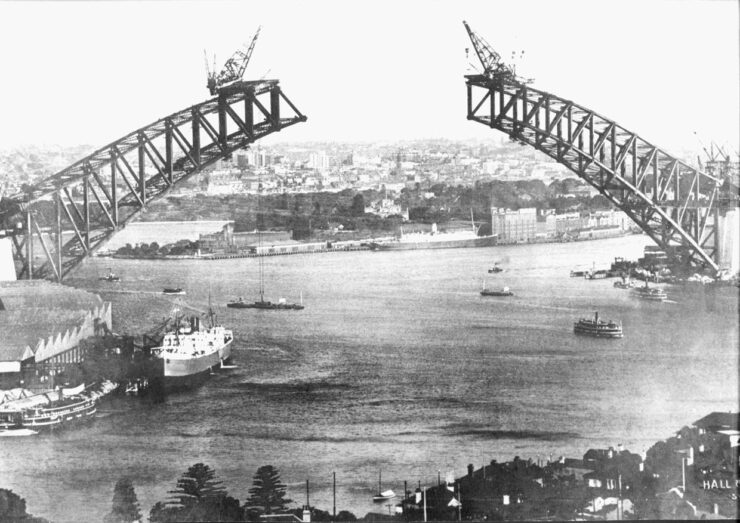
In the May of 1916, whilst carrying 2,500 troops in the Mediterranean, A 40 was narrowly missed by a torpedo from an unknown vessel.
In the May of 1917, A 40 was requisitioned under the Liner Requisition Scheme, and mainly used to transport refrigerated cargo.
On the 9th June, 1917, A 40 underwent another near miss from a torpedo, again from an unknown vessel. On the 21st July, A 40 was chased by a surfaced U-boat, off the Canary Islands, but escaped with her superior speed.
In 1919, A 40 reverted to White Star Line, and was refurbished by Harland and Wolff, at Belfast
Ceramic made her first post-war sailing on the 18th November, 1920, between Liverpool, Glasgow and Sydney. Glasgow became an occasional call on the route after the war.
In 1930, Ceramic collided with Pacific Steam Navigation Company’s ship Laguna, in the River Thames.
In 1934, Ceramic was transferred to the Shaw, Savill & Albion Line, when the Cunard White Star merger took place.
On 25th August, 1934, Ceramic made her first Shaw, Savill & Albion Line sailing between Liverpool and Brisbane.
In the June of 1936, Ceramic underwent a refit, and was modernised at Harland and Wolff, in Govan. The verandah cafe, aft, together with the glassed in forward bridge deck date from this refit. Ceramic’s crew accommodation was also repositioned, and improved.
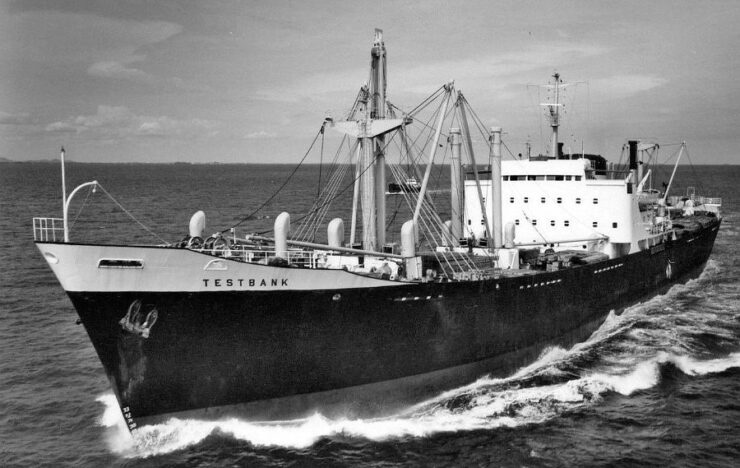
On the 15th August, 1936, Ceramic returned to the Shaw, Savill & Albion Line service.
Ceramic was commissioned as a troopship in the February of 1940, and in the December, she collided with the Andrew Weir & Company’s vessel Testbank.
On 23rd November, 1942, Ceramic departed Liverpool carrying 378 passengers, plus 278 crew and gunners. On December 6th/7th, around midnight, Ceramic was traveling between Liverpool, South Africa and Australia, when she was hit by a torpedo, off the Azores, from U-515.
Out of the entire passengers and crew of 655, there was just one survivor, a Royal Engineer sapper called Eric Munday, who was picked by U-515 for interrogation. Ceramic’s loss went unrecorded for many months, until the sole survivor, who was now a Prisoner of War, in Marlag-Milag-Nord, in Hamburg, wrote home about it.
